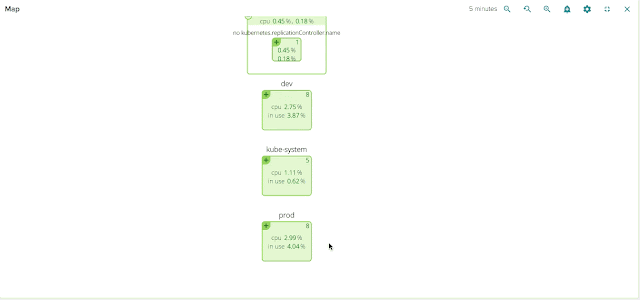
](https://2.bp.blogspot.com/-hGQtaIV9XTA/Vk0RnwtlcGI/AAAAAAAAAuM/7ndiyAWpSvU/s1600/image08.gif)
The two pictures below show the exact same infrastructure and services. But the first one depicts the physical hierarchy, with a master node and three minion nodes; while the second one groups containers into namespaces, services and pods, while abstracting the physical location of the containers.
Hopefully it’s self-evident how much more natural and intuitive the second (services-oriented) view is. The structure of the application and the various dependencies are immediately clear. The interactions between various microservices become obvious, despite the fact that these microservices are intermingled across our machine cluster!
### Conclusion
I’m pretty confident that what we’re delivering here represents a huge leap in visibility into Kubernetes environments and it won’t disappoint you. I also hope it can be a useful tool enabling you to use Kubernetes in production with a little more peace of mind. Thanks, and happy digging!
_You can find open source sysdig on [github](https://github.com/draios/sysdig) and at [sysdig.org](http://sysdig.org/), and you can sign up for free trial of Sysdig Cloud at [sysdig.com](http://sysdig.com/). _
_To see a live demo and meet some of the folks behind the project join us this Thursday for a [Kubernetes and Sysdig Meetup in San Francisco](http://www.meetup.com/Bay-Area-Kubernetes-Meetup/events/226574438/)._